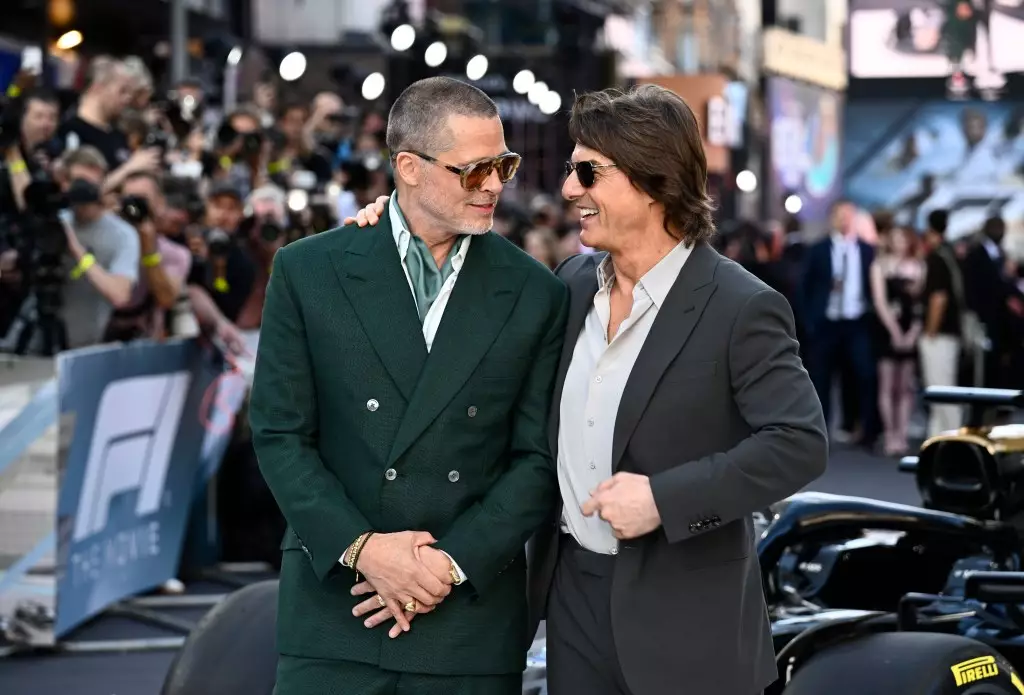Hollywood often idealizes the thrill of racing, yet it frequently struggles to translate this adrenaline-fueled world onto the big screen with depth and authenticity. The story of Brad Pitt and Tom Cruise initially being linked to “Ford v Ferrari” exemplifies how studio politics, creative disagreements, and personal ambitions can derail potentially compelling projects. Despite the film’s eventual success and acclaim, the murky behind-the-scenes conflicts serve as a stark reminder of Hollywood’s inability to capitalize on authentic racing stories. When stars like Pitt and Cruise entertain the idea of a sequel or related project, it isn’t just nostalgic longing—it’s a recognition of the narrative richness that gets lost in executive decisions.
The original “Ford v Ferrari” showcased the drama, rivalry, and technical ingenuity of motorsport; yet, critics and fans alike often wonder what could have been had other elements, such as the personal stories of the drivers or the technological innovations, been explored more deeply from the outset. Hollywood’s tendency to simplify these stories for broad appeal underrates the complexity of racing, which is rooted in human perseverance, ingenuity, and sometimes tragic hubris. The missed opportunity to deepen this narrative demonstrates how, too often, racing films become superficial spectacle rather than genuine storytelling canvases.
The Commercial Imperative Over Artistic Vision
The decision-making process behind Hollywood blockbusters is predominantly driven by commercial interests, which often stifles creativity. Kosinski’s account of studio objections to “Ford v Ferrari” reveals how budget concerns and financial constraints inhibit the realization of more ambitious visions. It raises critical questions: are studios truly interested in exploring the intricacies of racing as a cultural phenomenon, or are they fundamentally focused on safe, formulaic entertainment that guarantees box-office returns? This commercialization dilutes the potential for profound storytelling and leaves a significant portion of the audience craving narratives that transcend clichés of speed and danger.
The fact that “Ford v Ferrari” did well commercially suggests that there is an audience hungry for more nuanced racing stories. Yet, the reluctance to invest in deeper, more complex narratives suggests Hollywood still sees racing films as only profitable if they are outer-layer spectacles. This attitude neglects the rich social, technological, and personal dimensions inherent in motorsport, which could serve as the foundation for a new wave of meaningful racing films.
Opportunities for a Center-Left Perspective in Motorsport Narratives
From a center-wing liberal perspective, motorsport often symbolizes both human innovation and environmental critique. While racing exemplifies technological prowess and resilience, it also highlights pressing issues like environmental sustainability and equitable access. Hollywood’s portrayal tends to ignore these themes; instead, it celebrates reckless individualism and corporate rivalry. A more responsible and nuanced approach could integrate narratives about reforms in racing, innovations in eco-friendly technology, and increasing diversity within the sport’s ecosystem.
Creating films that foreground issues like climate change, social justice, and technological responsibility would resonate with a politically conscious audience that seeks stories of progress rather than just adrenaline rushes. This shift could elevate racing stories from mere entertainment to powerful commentary—highlighting how the sport can evolve to meet modern ethical standards while still capturing the spirit of competition.
The Unfulfilled Promise of Racing Cinema and Future Horizons
The ongoing chatter about sequels, spin-offs, or new projects underscores an undeniable demand that Hollywood continues to ignore. Yet, it also hints at a broader opportunity—a chance to reimagine racing films that genuinely reflect the complexities of the sport and its cultural significance. With the right creative vision, driven by storytelling that embraces social consciousness, technological innovation, and authentic human struggle, the genre can transcend its current superficiality.
Brad Pitt’s openness to returning to a racing role suggests that Hollywood still recognizes the potential of this universe. However, it remains to be seen whether studios will learn from past mistakes and prioritize meaningful narratives over easy profits. A true reckoning would involve engaging with the broader implications of motorsport: its environmental footprint, its capacity for technological progress, and its role in shaping cultural identities. Only then can racing movies fulfill their capacity—not just to entertain but to challenge and inspire audiences with stories that matter.


Leave a Reply